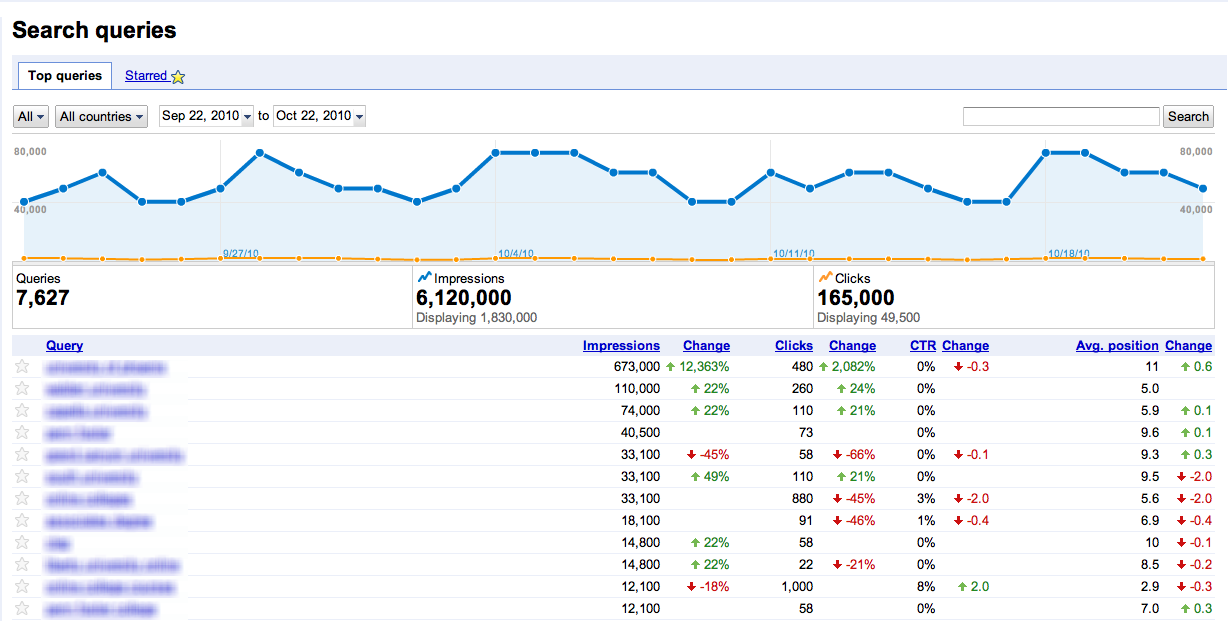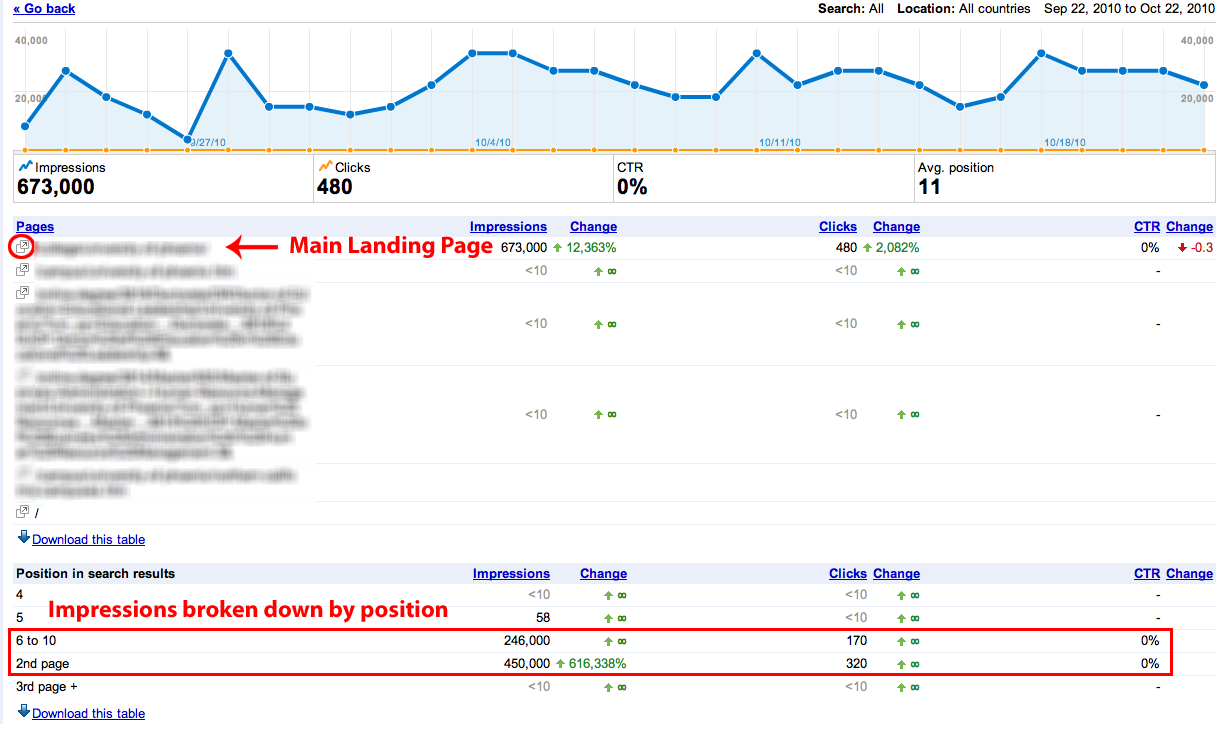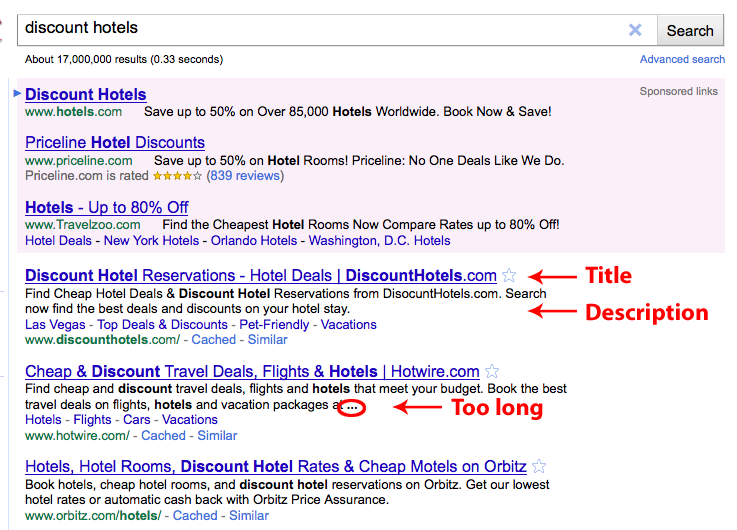Problem: SEO doesn’t work. We have been focusing on optimizing for the keywords we want, and we’re not moving the needle in our actual organic traffic.
Solution: Diagnose click through rate (CTR) issues in Google Webmaster Tools.
 Okay, so this is based on a true story. I work as the Director for Search Services for BlueGlass Interactive, a search and social agency, and I hear this one from time to time — especially when a company is paying for search engine optimization (SEO).
Okay, so this is based on a true story. I work as the Director for Search Services for BlueGlass Interactive, a search and social agency, and I hear this one from time to time — especially when a company is paying for search engine optimization (SEO).
So the problem I run into is there are times we optimize a site for a term, and we know that the site is ranking for the keyword(s) from our keyword ranking tools, such as you get from both Raven and SEOmoz, but we don’t see the results in analytics.
Enter Google Webmaster Tools
Here’s what I tell my clients every time: If your site isn’t signed up for Google Webmaster Tools, go and sign up today. It’s free, and Google will show you the number of times each of your keywords had impressions and corresponding click through rates.
Google Webmaster Tools is a veritable smorgasbord of beautiful, actionable data. But we’re going to focus our attention on the Search Queries report. You can find it in the Dashboard (top-left corner, click on More) or under Your site on the web in the left navigation panel.
What you see is a list of search queries your site is showing up in Google for. You can segment this data by either clicking on the All or the All Countries drop-down menus. For this example, we’ll look at the data in aggregate.
Click for larger image.
You can reorder the data on the fly by clicking on the column headings or export the table as a .csv file and bring it into Excel or reorder, filter, and display visually.
Umm GREAT! Now what I do with this?
Here’s my well-worn path when analyzing this data:
Look at the search queries (AKA keywords in the SEO world) that are generating the most impressions.
Check out the Avg. Position for that query term. Is it on the first page (positions 1-10)?
Click on the query term to see the landing page Google is pointing the traffic to. Is it optimized?
Click for larger image.
Look further down that page (as seen above) to see its Position in search results. For the term I clicked on, it’s showing up the majority of the term on page two of the search engine results pages (SERPs), next in positions 6–10, and then a few in position 5.
Look for keywords that have low CTRs but show up in the first five positions — especially the top three spots.
Do a search for that query term. What are the titles and descriptions like for those terms? How does my site’s title and description compare to those in the other top spots? Is the description too long (as evidenced by elipses)? Is there a call to action? Is the title intuitive? Too short to communicate what the page is about? Too long? A series of keywords (the worst)?
Then once the visitors get to your site you should be monitoring bounce rates. Any keywords with high bounce rates need to be investigated. It tells you visitors aren’t finding what they want fast enough or your site is ranking for keywords that are irrelevant. So either optimize for better keywords, better conversions, or both.
So, in my opinion, SEO isn’t measured by the traffic that makes it to the site alone, and savvy marketers will do well to check to make sure your potential traffic isn’t stopping just shy of your front door.



Another good read…
Thanks!
thanks a lot.
Run android apps On Windows
You’re welcome.